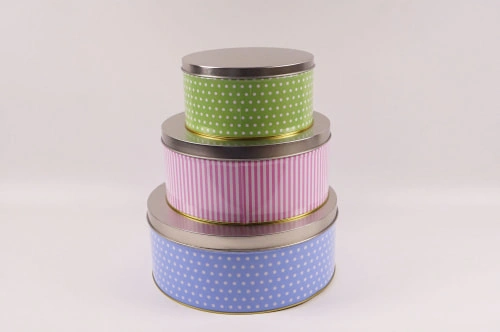Tin packaging is widely used across various industries, and its classification can be complex. Generally, tin boxes can be categorized based on structure, production process, shape, and usage. These categories include two-piece tins, three-piece tins, bespoke tins, welded seam tins, and PET buckets. If this is your first time considering tin packaging for your products, these terms might be confusing. As someone with over ten years of experience in this field, I’m here to clear up any confusion and help you communicate more effectively with your suppliers. This article will provide an overview of the key categories of tin boxes.
1. Production Process Classification
From a production process perspective, tin boxes are mainly classified into two categories: side-lock tins and welded-seam tins. These categories differ primarily in the method used to join the edges of the tin.
- Side-Lock Tins: In this method, the two ends of the tinplate are folded in opposite directions, hooked together, and securely pressed using a punching machine. Side-lock tins are commonly used for products like candy tins, chocolate tins, tea tins, coffee tins, wine cans, cigarette tins, and cosmetic tins.
- Welded-Seam Tins: In this process, the ends of the tinplate are joined together using welding. Welded-seam tins are typically used for packaging products such as oil tins, milk powder tins, and motor tins.
2. Structural Classification of Tin Boxes
Tin boxes can also be classified based on their structure, which includes the following types:
- Drawn Cans: In this type, the body and bottom of the tin are made from the same sheet of tinplate. The body is “drawn” out from the material of the bottom.
- Seam-Bottom Cans: In these cans, the body and bottom are separate pieces, and after forming, the two parts are joined using various methods.
- Buckle-Bottom Cans: Similar to seam-bottom cans, the body and bottom are distinct parts, but they are connected through a different process.
The images below demonstrate the structural differences among these types of tins.
3. Shape Classification of Tin Boxes
Tin boxes are highly versatile when it comes to shape. They can be made in a variety of forms, including:
- Round tins
- Square cans
- Rectangular cans
- Heart-shaped tins
- Tree-shaped tins
- Book-shaped tins
- Bus-shaped tins
- And many more
Unlike other materials, tin allows for great flexibility in design, enabling the creation of custom shapes that match your brand’s unique requirements. If you’re interested in designing a one-of-a-kind tin box, check out our article on How to Customize a Tin Box.
4. Usage-Based Classification of Tin Boxes
Tin boxes have a wide range of applications across various industries, including:
- Candy tins
- Biscuit tins
- Chocolate tins
- Tea tins
- Coffee tins
- Cigarette tins
- Wine tins
- Oil tins
- Milk powder tins
- Beverage cans
- And many more
Due to their eco-friendly nature, ease of printing, and ability to take on various shapes, tin packaging has become increasingly popular in recent years. It’s a versatile and sustainable choice for many product categories.
The above outlines the most common classifications of tin boxes. If you’d like to learn more about tin packaging or explore options for packaging your product in a unique way, feel free to reach out to us. Our professional packaging team is ready to assist you.





![CR tin Secure and Stylish Child-Resistant Tin Packaging for Safe Storage At [Your Company Name], we specialize in innovative child-resistant tin packaging solutions designed to meet the highest safety standards while enhancing your brand's visual appeal. Our child-proof tins are perfect for a variety of industries, including pharmaceuticals, cannabis, and household products, ensuring that safety and functionality go hand in hand. Our child-resistant containers are crafted with precision, employing a patented locking mechanism that is simple for adults to use but challenging for children, effectively reducing the risk of accidental access. Each tin is constructed using high-quality, durable materials that offer excellent protection against contamination and damage, making them ideal for both child-safe packaging and adult use. Safety is at the forefront of our design process, but we do not compromise on aesthetics. We offer custom tin packaging options that allow you to tailor the look and feel of your products to match your brand identity. With advanced printing and embossing techniques, your packaging is not just secure but also visually appealing, enhancing shelf presence and consumer attraction. Our tins are also environmentally friendly, aligning with current trends in sustainable packaging. They are reusable and recyclable, supporting your company's green initiatives. Choose from a variety of sizes and shapes to fit your specific needs, whether for cannabis packaging, pharmaceutical containers, or any other products requiring stringent safety measures. By choosing [Your Company Name], you are opting for child-resistant packaging that protects your products and your end users. Our tins meet all regulatory requirements for child-resistant effectiveness, providing you with peace of mind and your customers with safe, accessible solutions. Keywords: child-resistant tin packaging, child-proof tins, child-safe packaging, custom tin packaging, sustainable packaging, cannabis packaging, pharmaceutical containers.](https://goldentinbox.com/wp-content/uploads/2024/05/CR-tin-goldentinbox-2-s.webp)


